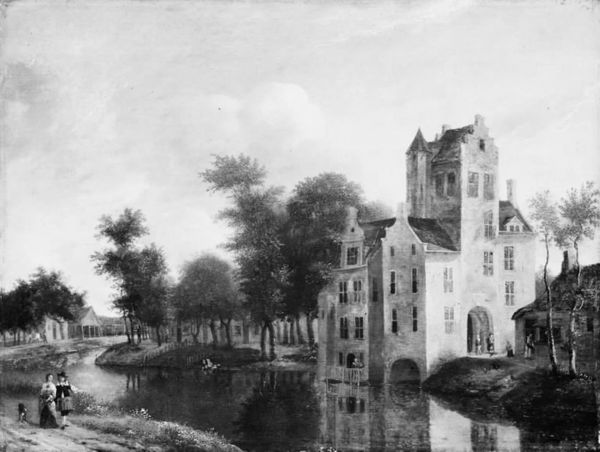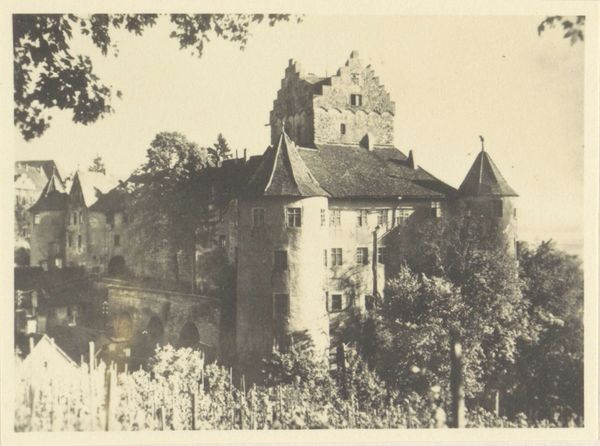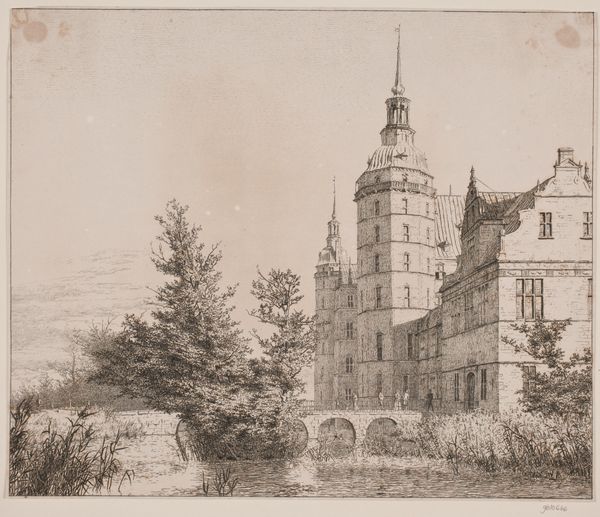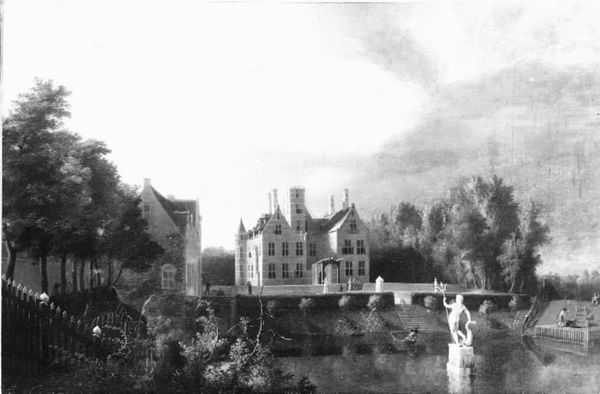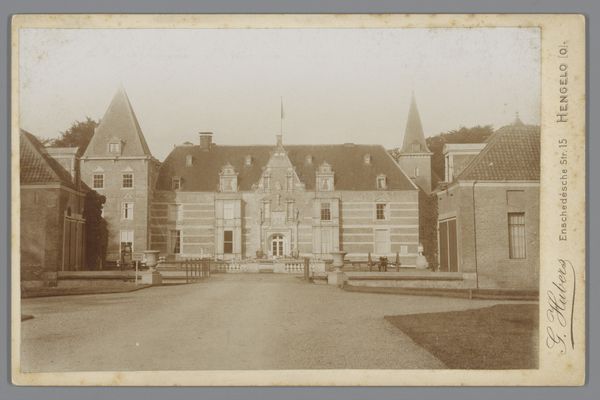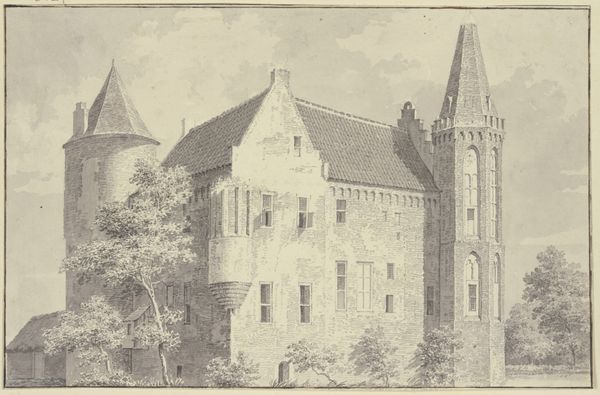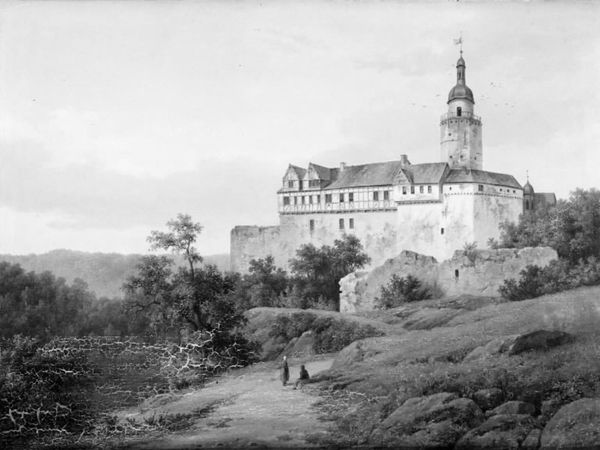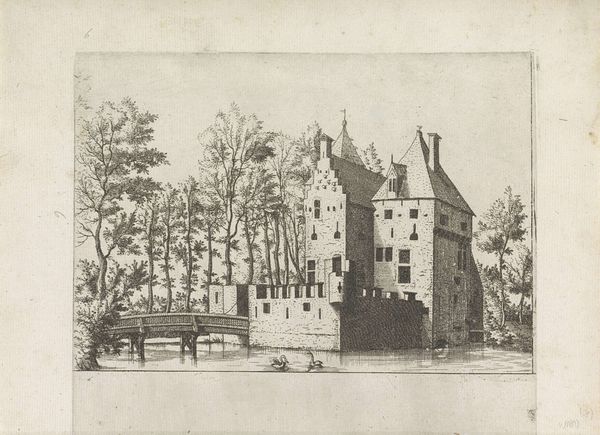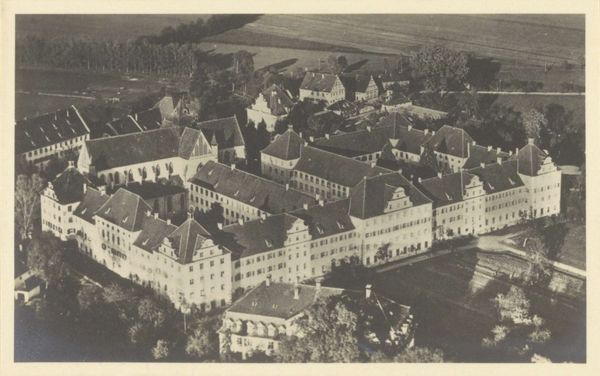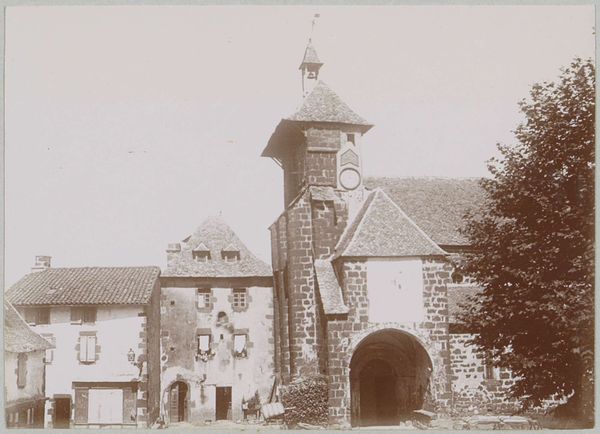
painting
#
cityscape
#
painting
#
landscape
#
classical-realism
#
cityscape
#
history-painting
#
academic-art
#
historical building
Dimensions: 45.5 cm (height) x 62 cm (width) (Netto)
Editor: This is "Hovedbygningen på Gisselfeld Kloster" by C.V.M. Jensen, painted between 1834 and 1839. It’s oil on canvas, depicting the main building of Gisselfeld Abbey. I’m struck by its tranquility. It feels very staged and almost idyllic. What do you see in this piece beyond its surface beauty? Curator: I see a very deliberate construction of power and privilege embedded in this landscape. While appearing tranquil, it presents a very specific narrative of Danish aristocracy. Look at how the architectural grandeur is emphasized, positioned to dominate the natural surroundings. How does this imagery reflect or perhaps even reinforce social hierarchies of the time? Editor: So, you're saying that even in a landscape painting like this, we should be critical of who is being represented, and who is not? Curator: Exactly! Who had access to such estates? Who benefited from them? Who toiled on the land to make such lifestyles possible? We must ask whose story is being told, and from whose perspective. This idyllic scene is likely obscuring a much more complex social reality marked by disparity. The artist chose to emphasize wealth, order and privilege and these choices speak volumes. Editor: That makes me think about the classical realism style. Is it perhaps a way of legitimizing the power structure by portraying it as timeless and perfect? Curator: Precisely. Academic art, with its emphasis on idealized forms and harmonious compositions, often served to reinforce dominant ideologies. And even this "objective" style carries embedded assumptions about what is considered aesthetically pleasing and culturally valuable. Do you think the artist was intentionally creating a propaganda piece? Editor: Hmm, I don’t know if it’s necessarily propaganda. Maybe they were simply perpetuating the values they believed in? Curator: Perhaps. And that in itself is worth examining. How do artists, consciously or unconsciously, perpetuate the status quo through their work? What is beauty’s relationship to power? Editor: This really changes how I see landscape paintings. It’s more than just pretty scenery; it's a social and political statement! Curator: I'm glad. Understanding art history is always about questioning the stories we tell ourselves and who gets to tell them.
Comments
No comments
Be the first to comment and join the conversation on the ultimate creative platform.
